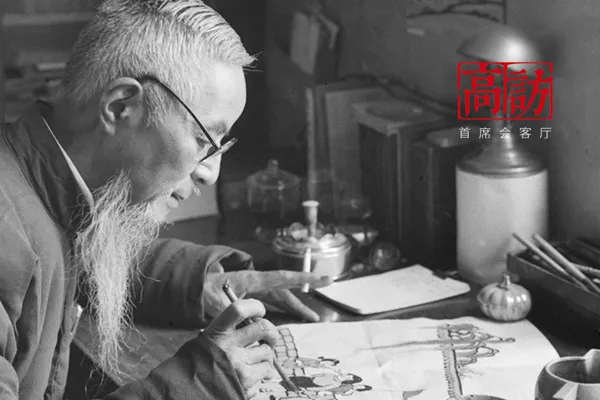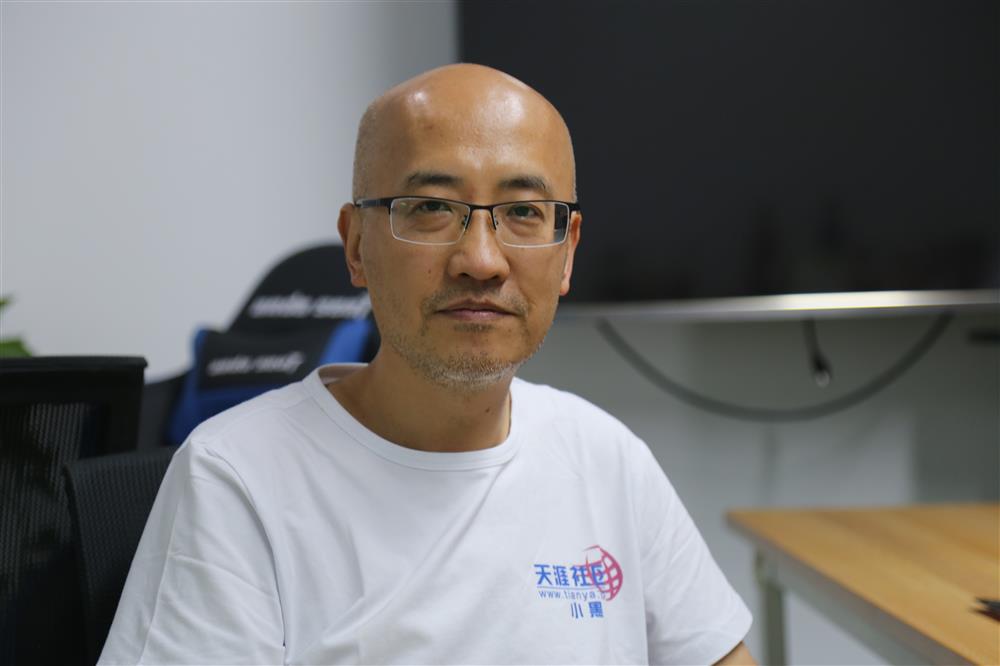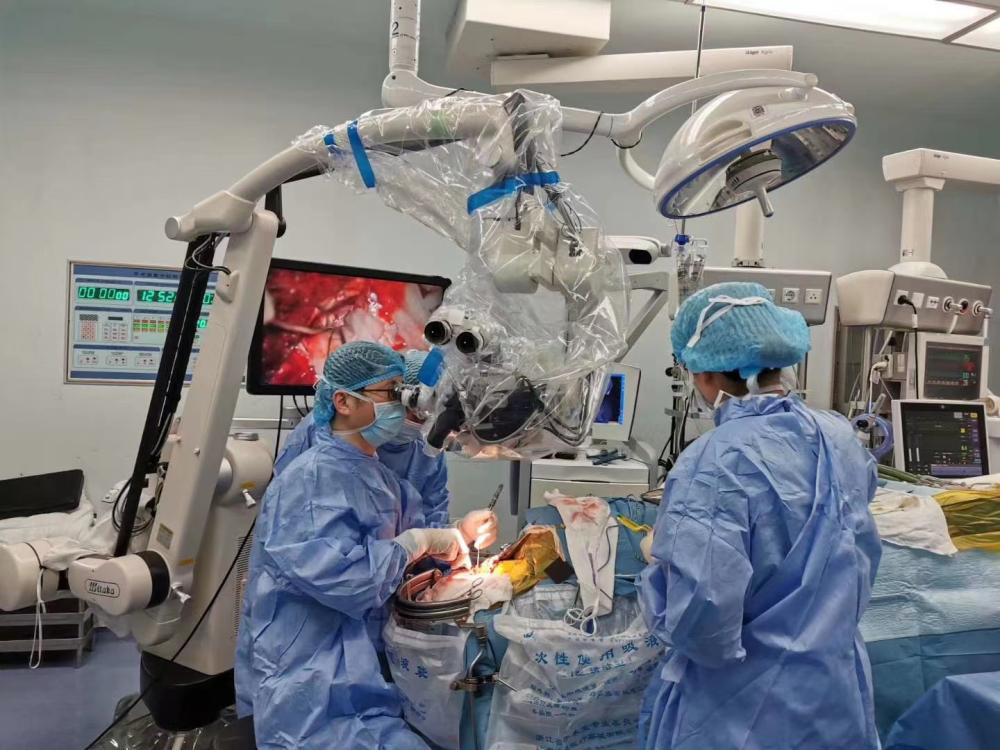How to reach the broad future of education? This botanical garden in Shanghai has been looking for the answer Wang Ximin | Popular Science Education | Chenshan
In recent years, botanical gardens, parks, and areas full of natural scenery have become more and more popular in Shanghai. The sense of relaxation surrounded by green plants is fascinating. "What is a better nature education" has also become a hot topic among more and more knowledgeable people.
Not long ago, Shanghai Chenshan Botanical Garden, which is well-known in Shanghai for hosting the "Grassland Radio Music Festival" for many years, launched the "Plants and the Future - 2024 Chenshan Botanical Garden Science Festival" for the first time. What kind of ideas are conveyed behind the continuous innovation, and what future exploration directions are brewing?
With the above questions, the reporter visited Wang Ximin, director of the Science Popularization Department of Chenshan Botanical Garden.
Better nature education: seeing not only things but also people
Shangguan News: In recent years, many citizens have inadvertently discovered that every time they open the Weibo or WeChat public account of Chenshan Botanical Garden, they feel like they have opened a "treasure box". In addition to the "Chenshan Grassland Radio Concert" which has been famous in Shanghai for many years, campus plant classes, "Little Botanist" training camps, "Plants Have Emotions" natural poetry creation competitions, "Park Healing" health talk shows, volunteer recruitment activities or work and study exchange meetings on various themes are all wonderful. This is not easy for a botanical garden with scientific researchers as the main force.
Wang Ximin: Since its establishment, Chenshan has positioned itself as a "domestic leader and world-class" park, with the mission of "intensively studying plants and spreading love to the public", based in East China and facing East Asia. Today, the breath that everyone feels is the result of years of hard work by Chenshan.
Especially in recent years, Chenshan has made great efforts to establish a national botanical garden; the national level attaches importance to building a country based on science and education, and popular science education has been increasingly valued, stimulating the desire of the education community and the public for high-quality popular science education content; Shanghai has made great efforts to build a "city of thousands of parks", integrating popular science content including nature education into the construction of parks of various levels and sizes; people are full of enthusiasm and yearning for running into the embrace of nature...
The overlap of the above multiple factors has prompted us to constantly think and explore "what is better nature education" and "what kind of popular science education is more worthy of our pursuit". With a strong desire for exploration and a sense of mission in our hearts, many gratifying changes have continued to take place in Chenshan.
The volunteers were divided into six groups, busy with the on-site decoration of the music festival. They carefully pasted the seat number plates to ensure that every audience member could find their seat as soon as possible.
Shangguan News: "What is better nature education" is a very abstract topic. How do we judge what is "better"?
Wang Ximin: Two things made me think further about this issue.
The first incident happened two years ago. A friend I hadn’t contacted for a long time suddenly sent me a WeChat message. Her daughter’s teacher assigned a particularly interesting task: ask the children to read the Classic of Mountains and Seas, choose a favorite “mythical beast”, and write a job application letter for it based on the characteristics of this “mythical beast”.
The "divine animal" chosen by the little girl was called Yingzhao. Considering that Yingzhao had the superpower to bring dead plants back to life, she thought of writing a letter to the director of Chenshan Garden, hoping to recommend Yingzhao to work in the greenhouse of Chenshan Garden.
Originally, this assignment would have ended there. Coincidentally, her mother remembered that I was working in Chenshan, and simply because she thought this assignment was interesting, she enthusiastically shared her child's homework with me.
I was very excited when I read this "recommendation letter". I was moved by the child's wild imagination and I admired the child's ability to build a clever and appropriate connection between fantasy literature and real life. It happened that our department was responsible for the popular science signs of the botanical garden, so I suggested that we make an explanation sign about the whole story and put it in our greenhouse. I hope that more visitors will have the opportunity to know this beautiful little thing and draw inspiration and strength from it.
The little girl was ecstatic when she heard about the plan, and she invited a classmate who was good at painting to carefully draw a portrait of Yingzhao for us to use when making the explanatory sign.
The "Mythical Beast 'Ying Zhao'" display board located in the greenhouse.
Another thing that touched me was that our Science Education Department launched a plant science video shooting project called "Plants Speak for You" in 2022.
Usually, experts are invited to participate in the recording and explanation of such events. But this time, we decided to change the format and invite ordinary people who are not experts to introduce the plants they love.
Once the call for submissions for this activity was issued in our science volunteer WeChat group, it received a warm response from many friends. Of the 50 video works that were finally completed, 45 were created by our science volunteers. They selected the species they wanted to explain on their own, and wrote the manuscripts by spontaneously studying and reading literature. After our staff confirmed the scientificity and fluency of the manuscripts, the science volunteers began to recite the explanation words and adapt to the camera sense.
The words and deeds of the adult volunteers also inspired the young volunteers. In the end, not only the adult volunteers but also many children appeared on camera to explain. Their lively explanations expanded the appeal and attention of the entire project. After the training of this activity, the children not only improved their ability to face the camera and organize language, but also started from the plants introduced, with curiosity and love, to learn more about plants and the nature around them.
These two things inspired me that the so-called "better nature education" requires seeing not only "things" but also "people". As organizers of activities, we should create conditions and opportunities as much as possible so that participants can feel that their interests and passions are respected and inspired while seeing the rich and colorful nature.
Photography volunteers and young tour guides are recording short plant science videos for the "Plants for You" project.
Shangguan News: With such ideas guiding practice, traditional "popular science education" and "nature education" have ushered in an opportunity to "start again."
Wang Ximin: That's right. Generally speaking, the traditional "popular science education" and "natural education" are mostly taught by professionals and researchers. Professionals and researchers have advantages in professional knowledge. Unfortunately, most of them are senior "naturalists" but not necessarily "educators" who are good at injecting educational functions into activities. More and more practices have shown that if we want "popular science education" and "natural education" to achieve better results and exert a deeper and longer-term influence, we can no longer simply be satisfied with the more traditional lecture format.
Specifically speaking of "nature education", nature is the carrier of education, and education is the essence. When conditions permit, we should strive to make the planning, organization, and design of popular science education a process that starts interactive learning, allowing the public to complete self-education in this interactive process.
In this process, we don’t have to worry about whether the participants have enough internal motivation. Instead, professionals and researchers can retreat to the position of “collaborators” to create conditions and opportunities for everyone to achieve better self-motivation.
Ordinary plants can also inspire inspiration and start artistic creation.
For example, for the child who helped write the self-recommendation letter for the English recruitment, the letter was written by her, and what we can do is to create an opportunity for her to show her creation and make her feel that her creation is recognized. For those volunteers who are willing to introduce their favorite plants, they don’t have to worry about their introduction not being professional enough. We will not only create conditions for them to complete the recording smoothly, but also provide support in the accuracy of professional knowledge.
I am an education major, and I have always believed that the occurrence of various beautiful little things has an irreplaceable positive motivational effect on people's physical and mental health and growth. And what we do in education is to hope that the lives of our audiences will have more unexpected fun and sense of accomplishment? After these things are done, the positive effects and social values behind them will spread out like ripples and be passed on to more people. I believe that things that can achieve such positive effects and social values are a key development direction for natural education in the future.
Chenshan went deep into schools to carry out the "Campus Plant Classroom" activity. The picture shows the seed teaching box designed specifically for this activity.
Shangguan News: Not long ago, with this idea in mind, you went to the UK with several scholars from Shanghai Jiaotong University and Zhejiang University to study advanced experiences and cutting-edge explorations in the fields of science education and nature education. What did you gain?
Wang Ximin: During this trip, we mainly visited representative "nature education bases" such as Chelsea Gardens, Kew Gardens, Cambridge University Botanic Gardens, the Natural History Museum, and Hyde Park. We also interviewed some front-line workers in science education and nature education.
After visiting the site and communicating with frontline workers, I have a deep feeling that "there is nothing new under the sun". In fact, as my country's higher education has made great progress in the past century, the gap between us and the old scientific education powerhouse Britain in the accumulation of basic knowledge in the fields of popular science education and nature education is narrowing. Most of the knowledge content disseminated and explained to the public by these prestigious "nature education bases" mentioned above is conveyed to the public in a similar way and with similar accuracy by many similar venues and scientific research institutions in our country.
The main difference may be that compared to us, they are closer to the public and have almost integrated scientific education and natural education into the lives of the public. They also offer lectures and visiting studies on knowledge dissemination, but they have more abundant teaching content and forms, more complete and mature teaching aids and teaching materials, hold events more frequently, and provide more precise segmentation and personalized services for various learning needs. Most importantly, most venues and scientific research institutions have a relatively mature self-motivation and hematopoietic mechanism to help all educational activities continue to output and iterate in a more stable state.
With such a solid foundation, most of them can provide a "film schedule" with a year-round cycle for the public and schools to choose the educational activities they want to participate in. The on-site management is organized in an orderly manner with various modules, creating better conditions and atmosphere for the public to visit frequently.
Children participating in the "Chenshan Wonderful Night" event.
One person can go fast, a group of people can go further
Shangguan News: Shortly after you returned from this trip, Chenshan welcomed its first Science Festival. One of the highlights of this Science Festival is that it comprehensively reflects the research progress of Chenshan in recent years in comprehensive functions such as scientific research, horticulture, germplasm preservation and science education. At the Science Festival, science posters, explanations by scientific researchers and booth interactions were integrated. For the first time, many citizens had the opportunity to have face-to-face contact with scientific research, horticulture and specimen museum professionals from Chenshan.
Wang Ximin: Yes. The activity format of setting up stalls and communicating face to face is not very new, but for most of our colleagues who usually devote themselves to scientific research and gardening, it is a rare opportunity to show off.
There was a phenomenon that we did not expect, but it inspired all of us participants: our event attracted many high school students and their parents to come and talk or even consult.
I was deeply impressed by a mother and her son. The mother came with her high school son. The reason was that the son was very interested in plant-related knowledge and wanted to study and choose a career in this field. What puzzled them was that the knowledge related to plants was vast and the number of branches was huge. Which specific directions or sub-fields could they start with and learn more about?
After knowing the purpose of their visit, I recommended several specific stalls to help them learn more. After receiving answers and guidance from professionals, the mother and son gained a lot of useful information and returned home satisfied. All of our staff on the scene were pleased and felt a sense of accomplishment to have such an effect.
The Science Festival at Chenshan Botanical Garden has three sections: "Colorful Gardening", "Plant Exploration" and "Green Future". More than 40 science exhibition booths have been set up to allow citizens and tourists to fully appreciate the charm of plant science and gardening during their visit to the garden. The picture shows the scene of the first Science Festival at Chenshan.
Shangguan News: You must have a lot of science education and nature education activities in your mind that you want to explore. Can you introduce some to us?
Wang Ximin: When I visited the Botanic Garden of Cambridge University this time, I happened to meet a group of children. The staff told me that this is a project specially set up for children who are not convenient to come to the garden. They either live in communities far away from the botanical garden or have limited family conditions, so it is difficult for parents to bring them to visit. Coincidentally, we later visited Hyde Park in London and learned that the park also set up a project to "attract people who have never visited Hyde to come to Hyde."
The two projects have high aspirations, and both hope to create some conditions so that people who have never visited the botanical garden can have the opportunity to visit, and hope that the social value of the botanical garden can radiate to a wider range of people. I am very inspired by this emphasis on social equity and social diversity.
In fact, Chenshan has been trying to open its doors to a more diverse group of people. Chenshan is well-known for its friendly environment to running enthusiasts. With our support, the "Dark Running Group" charity event for blind running enthusiasts also ran in Chenshan. Not long ago, companies and social welfare organizations contacted us, hoping to open plant experience activities for autistic children and plant experience camps designed specifically for blind children. We welcome such activities and are willing to work and contribute to the smooth holding of such activities.
In my mind, all these activities can truly affect some specific people and groups. Isn't this the value of us as science educators and nature educators?
In the broad sense of the social field, one person can go fast, but a group of people can go further. Whether it is popular science education or nature education, it is essentially to serve the purpose of achieving better communication and exchange between people. If we can help such a cause, we are willing to do our best to support it.
Wang Ximin said, "What we do in education is to bring more unexpected fun and sense of achievement to the lives of our audiences, right?"





